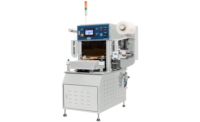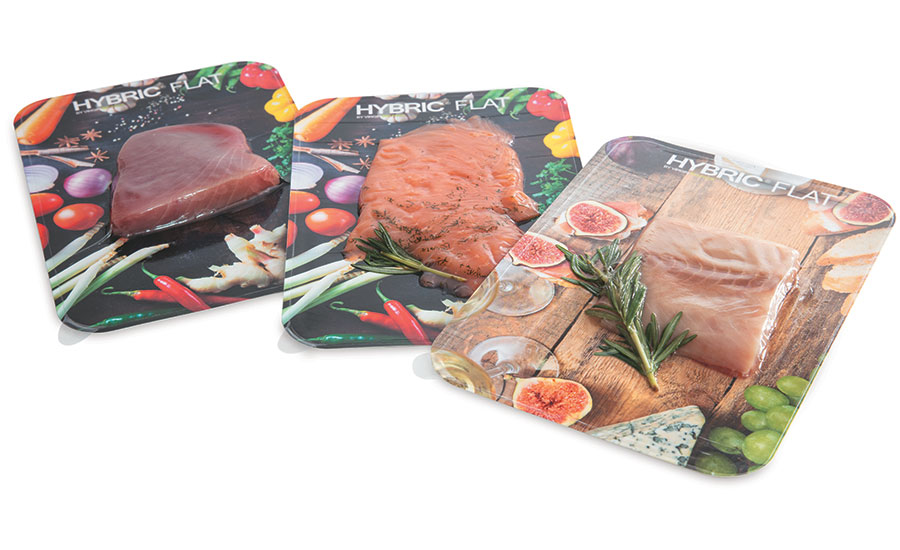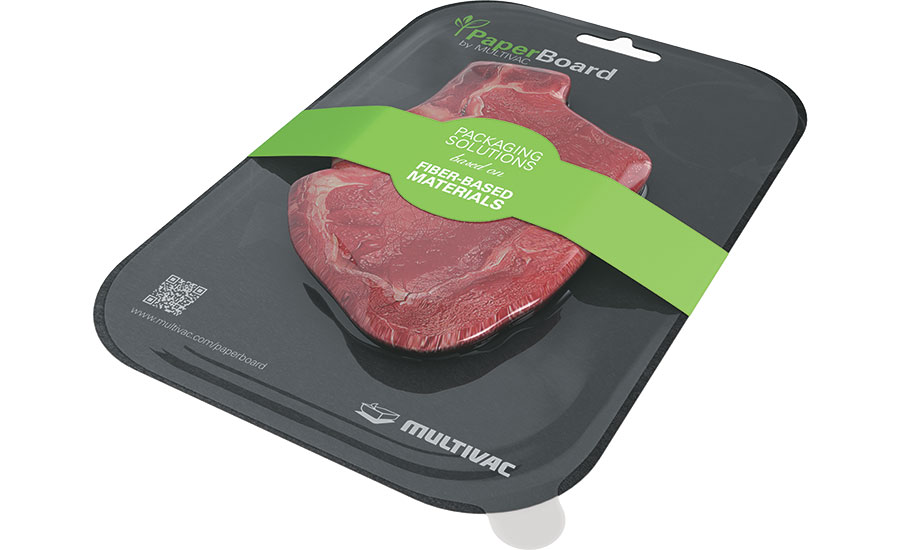Materials
Vacuum Skin Packaging for Premium Foods
VSP accommodates differently shaped products and sharp edges, and it can skin pack with paperboard, offering more options.






While vacuum skin packaging (VSP) has been available for the past several years, the technology seems to be gaining momentum as a preferred package of choice for more premium food options. This shift toward greater acceptance is due in large part to newer films that can accommodate products of different shapes, high protrusions and sharp edges. And with the ability to skin pack with paperboard, there’s an expanded range of applications and options for VSP.
VSP originally got its foothold as a viable packaging option years ago in Europe, but even consumers there took time to embrace the new package design. VSP film encapsulates the product like a second skin, securing it tightly but free of tension and without affecting the product’s shape. The upper web (film) and the lower web (rigid film or tray) are completely sealed with each other, enclosing the product entirely.
The reason VSP technology has been slow to catch on with the public, both in Europe and the U.S., is that it looks different. Consumers are used to seeing fresh meats, poultry and seafood presented with top seal over a deeper tray because that’s how it’s always been. With VSP, the outer packaging looks almost invisible — the top film is pulled onto the product tightly, eliminating nearly all package atmosphere. This invisible look is different, and that change can be reason for pause with consumers, especially if there’s no messaging from the store or brand explaining what this new package is and the benefits behind it.
VSP Attributes
New films and tray materials are doing just that by telling a story and framing the product as the hero.
Film technology that includes different grades for the upper and lower webs provides brands with options for their products. This range of films encompasses solutions for all general applications and enables individual sealing systems, such as skin-peel, burst-peel and lower monowebs.
For the more premium meats, such as bison, lamb chops, steaks and seafood, the upper webs should have a maximum transparency and a high degree of gloss to reflect the value and differentiation of the product. Additionally, upper webs can be manufactured with puncture-resistant materials so that even sharp products or those with bone can be packed, and they have stretch and shrink properties to accommodate products with high protrusion or with a shape that is not typical. Beyond being able to present the product in its natural state, VSP can extend the shelf life of products up to an additional seven days, in some cases, due to the absence of oxygen within the package.
These films are tailored in accordance with the specific application for the product (form, height, consistency) as well as to the lower web. They can be printed individually to further connect with the consumer, and really add a punch to the presentation.
Lower webs are available in different colors, thicknesses and peel-off properties.
Paperboard vs. Plastic
New innovations in vacuum skin packaging aren’t restricted to only films. Some manufacturers are replacing plastic trays with poly-coated paperboard. VSP seals just as well and secures properly to paperboard as it does in comparison to plastic.
Paperboard affords brands another option in designing their packaging to best meet the needs of their target consumer. Paperboard certainly brings a strong sustainability message, which can be an attractive selling point to people — especially millennials — who seek brands they perceive to be good stewards of the environment.
Using paperboard as a lower web does have a drawback: a potentially shorter shelf life for food. By switching from plastic to lower barrier paperboard the shelf life can decrease, depending on the specific product being packaged, shrinking the amount of time a product is available for sale and use. This often means more food can go to waste. It’s a balancing act when evaluating the environmental impact of paperboard versus plastic. For each individual brand, it’s all about perception and knowing the selling points and motivations of your target audiences.
Getting Started
When building packaging systems, first and foremost consider the product itself to include:
- Shelf-life expectation.
- Mechanical protection requirements.
- Marketing attributes.
- Target consumer.
- Opening and reclosing properties.
- Package cost.
- How the product will be or should be loaded or filled.
- Printing and labeling requirements.
- Interfaces with other equipment in the production process.
- Proper packaging equipment.
A reputable supplier can help identify answers to these and other questions about a product and application, and recommend the proper packaging to best achieve sales goals and objectives while remaining cognizant of the budget.
VSP is a good option to consider when packaging more premium products. In addition to an attractive presentation, VSP prevents liquid from leaking and can extend shelf life up to a week. Evaluate your specific application, along with your business and marketing goals, to see if VSP is right for you.
Established in 1987, MULTIVAC - USA is the #1 daughter company of MULTIVAC Global. To provide customers with a single source supply network, MULTIVAC offers thermoforming, traysealing and chamber machines along with labeling, printing, inspection and automation. In addition, MULTIVAC Certified films are designed and tested for optimal performance on MULTIVAC equipment. For more information, visit us.multivac.com.
Looking for a reprint of this article?
From high-res PDFs to custom plaques, order your copy today!









